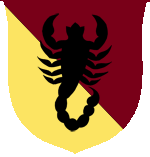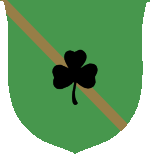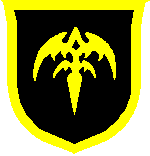| It is currently Sat Apr 27, 2024 12:23 pm |
|
All times are UTC - 6 hours |
|
|
Page 1 of 1 |
[ 4 posts ] |
| Print view | Previous topic | Next topic |
A Survey of 14th Century Effigies
| Author | Message |
|---|---|
 Joined: Tue Aug 03, 2004 5:33 am Posts: 610 Location: Baton Rouge, LA |
I know Sir Victor was asking about this transitional stuff before I went to Philly. So here's an essay I wrote up based on a recent link I saw in the AA.
The thing about transitional armor (armor from the second half of the 14th century where plates started to cover up and replace mail) is that there really isn't much of it that has survived. Since we don't have many extant pieces, a lot of historians turn to art from the time, particularly effigies, which we have in much greater quantity than surviving pieces of armor. A guy on the forum recently posted this link to a bunch of effigies that range from 1170 to 1407. Note that this is NOT an exhaustive collection of every effigy known to man. From what I understand, there are a TON of effigies all over in Europe. Another thing to note is that it could have taken years for an effigy statue to be carved and placed on a tomb. As a result, the statues can be 5 to 10 years or more outdated. According to this sample of effigies, plate doesn't really show up until 1323 on the effigy of William Fitzralph. Before that you'll obviously see plate helms, and if you look carefully you'll see floating polyns here and there, but there isn't really any plate limb defense until 1323. So here's what we see on Fitzralph's effigy: Head - Bascinet with mail aventail Arms - Roundels protecting shoulder and elbow joint "Gutter" vambraces and rerebraces non articulated couters plates are pointed on over mail Hands - Mail Mufflers Body - Surcoat over mail hauberk over padded jack. Due to the wrinkles of fabric under the upper "belt" at the waistline, I would say there is no plate torso protection underneath the surcoat. Legs - Gutter greaves non articulated polyns *possibly* padded cuises plates are pointed over mail Feet - Plate sabatons of some kind over mail After 1323, we begin to see an increase in the coverage of plate and an evolution into articulated pieces: The effigy of John de Creke, died 1325, show very nearly the same configuration as Fitzralph, with the exception that the vambrace is underneath what looks to be more of a 3/4 length mail sleeve. The rondels on the shoulders also appear to be placed more on the cap of the shoulder than on Fitzralph's effigy bronze. On the effigy of John d'Abernon, died 1327, we see a nearly identical configuration to John de Creke with one exception - the surcoat is no longer folded or wrinkled along the natural waist. This smooth tightness could very well be indicative of surcoat being worn over a coat of plates or a leather or cloth covered breastplate. Since the folds do not occur until the hips, it may very well be possible that the coat of plates or breastplate includes a fauld as well. On the effigy of Richard de la Bere of Westcote, died 1332, we again see gutter greaves and couters, but no other signs of plate except the helm. On the effigy of Philip de la Beche, died 1336, we can see what appears to be a gutter rerebrace, shoulder cap, padded cuises, and polyns. The folds and wrinkles in the surcoat do not seem to imply that a breastplate is beneath. On the effigy of Hugh de Audley, 1336, we see fully articulated arm and leg armor, but the text states (should be much later) so the effigy is either misattributed or was made decades after his death using contemporary armor of the time when the effigy was created. On the effigy of Roger de Kerdiston, died 1337, gauntlets make an appearance. It also seems that the vambraces and greaves have become fully enclosed, but the couters and polyns do not yet appear to be articulated. Cuises appear to be padded. On the effigy of John of Ansley, died 1340, we again see enclosed greaves and unarticulated polyns. On the effigy of Gilbert Bernard, died 1340, we see a fully articulated plate armor including gauntlets and what appear to be laminated spaulders. On the effigy brass of Hugh Hastings, died 1347, we again see gutter arm defenses with roundels and what could possibly be articulate polyns. On the effigy brass of Almaric St Amand , c.1340, we see what appears to be enclosed vambrace and rerebrace with hinges built it and a roundel protecting the elbow joint. The legs are protected by gutter greaves and a knee defense that seems to wrap around the back of the knee joint. The helm appears to be some sort of kettle hat over a bascinet or great bascinet. On the effigy brass of King Edward III, c. 1340, we see what appears to be a gutter arm harness with articulated couters, though the vambrace plate seems to be on inside of the arm which would make articulation nearly impossible. Spaulder lames are visible at the top of the rerebrace. The legs are protected by gutter greaves and polyns that, while similar to those in the last effigy, appear to be articulated in this one. On the effigy brass of Ralph Stafford, c 1340, we see nearly an identical armor as that of Edward III, this time with bascinet and aventail. The bascinet has a visor that appears to flare out at the bottom to potentially provide some protection to the neck. On the effigy brass of Roger Grey, c 1340, we see a very similar armor as the previous two, this time with what appears to be roundels at the elbows instead of couters. On the effigy brass of Thomas Beauchamp, c 1340, we see what appears to be a fully articulated arm harness, spaulders, and similar legs to the previous. The bascinet with aventail also appears to have a visor similar to that on the brass of Ralph Stafford. From this point on, the armor in the effigies seems to remain of nearly identical form: Bascinet and aventail, laminated spaulders, articulated arm harness, most frequently with enclosed upper and lower canons, coat of plates or covered breastplate and fauld, articulated leg harness with half or full greave. I'll go through the rest of the effigies and point out some of the inconsistencies: William de Gorges 1346 - Note the unusually large (for this time period) fan on the polyns and couters. John Hauteville or John Wych - While very cool looking, this effigy is just odd in a lot of ways. This may have been sculpted a long time after the subject had died. Nicholas de la Beche, died 1348 - Note the very clear lacing on the side of the CoP/surcoat and the long integrated hinges on the vambrace and rerebrace. John de Lyons - note again the lacing on the side. Also of interest are what appear to be laminations at the wrist. John Leverick - More lacing on the side, interesting laminated gauntlets. Interesting scales on helmet. Otho de Grandisson - nice shot of the cuises; appear to be padded or splinted. Maurice Berkley 1368 - Another shot of padded/splinted cuisses? Thomas Cheyne 1368 - Splinted greaves? possibly Jack of Badsaddle, died 1375 - first appearance of what seem to be full plate cuises. Edward of Woodstock, died 1376 (the Black Prince) - This is probably the best preserved, clearest example of what armor of the time period probably looked like. Mail, plate, and cloth are easily distinguishable from each other. John Thornbury, died 1396 - another example of a rather large polyn fan for the time. So based solely on this sample of effigies, I would conclude that medieval plate defense for the limbs and body began to show up at about 1320-1325 and had evolved into fully articulated harness by 1340. From 1340 to 1407 (the end of this sample of effigies) plate armor seems to have remained largely unchanged. |
| Wed Dec 17, 2008 3:59 pm |
|
 Joined: Tue Jul 03, 2007 10:32 pm Posts: 67 Location: pride |
nice link , saw a few new effigies
_________________ Domus Scorpius, Warrior Scholars |
| Wed Dec 17, 2008 4:58 pm |
|
 Joined: Fri Jul 02, 2004 11:50 am Posts: 587 Location: Baton Rouge |
Well spoken, Sir Eric.
I had checked this link out the other day on the Archive too. Since I was at work, I didn't spend a lot of time studying all of the different effigies. I think with so many to choose from, anyone could easily pickout an effigy, and try to duplicate it. Perhaps we could make this a joint-House project? hehe |
| Wed Dec 17, 2008 8:20 pm |
|
 Joined: Tue Aug 03, 2004 5:33 am Posts: 610 Location: Baton Rouge, LA |
I've had a late 14th century kit designed for months. I just have to find the time to make it :)
PM me about your joint venture proposal. |
| Wed Dec 17, 2008 11:43 pm |
|
|
|
Page 1 of 1 |
[ 4 posts ] |
|
All times are UTC - 6 hours |
Who is online |
Users browsing this forum: No registered users and 4 guests |
| You cannot post new topics in this forum You cannot reply to topics in this forum You cannot edit your posts in this forum You cannot delete your posts in this forum You cannot post attachments in this forum |
